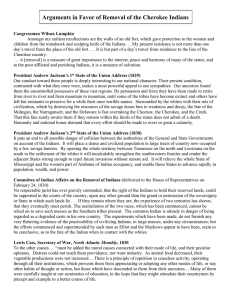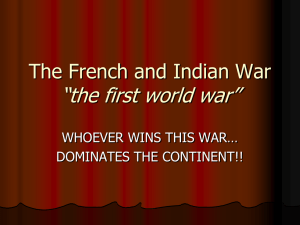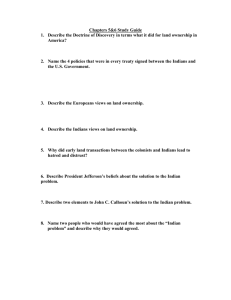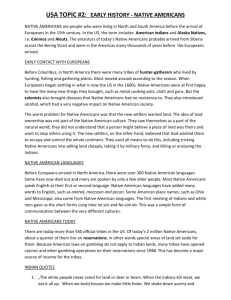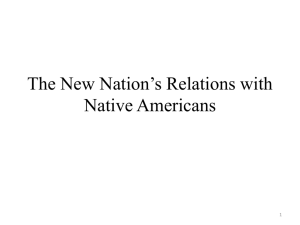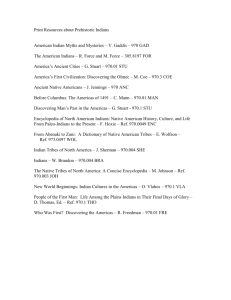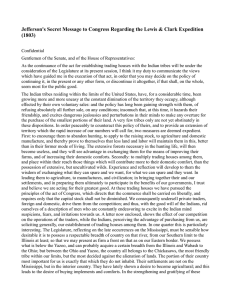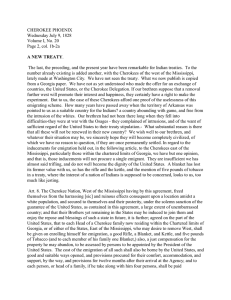Chapter 18: The Westward Movement Study Guide Know terms
advertisement
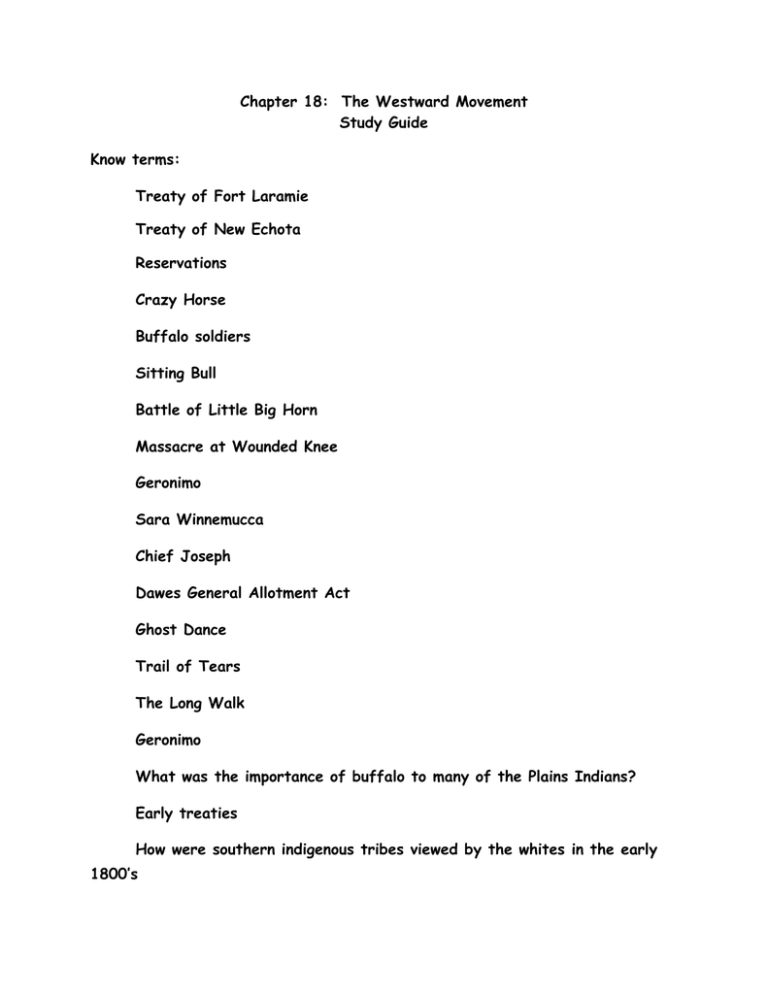
Chapter 18: The Westward Movement Study Guide Know terms: Treaty of Fort Laramie Treaty of New Echota Reservations Crazy Horse Buffalo soldiers Sitting Bull Battle of Little Big Horn Massacre at Wounded Knee Geronimo Sara Winnemucca Chief Joseph Dawes General Allotment Act Ghost Dance Trail of Tears The Long Walk Geronimo What was the importance of buffalo to many of the Plains Indians? Early treaties How were southern indigenous tribes viewed by the whites in the early 1800’s What were some of the Plains Indian tribes? What were some reasons that the Indians were forced off their lands? (In other words, why did people move or expand into Indian territories?) Andrew Jackson – strong proponent of Indian removal Indian Removal Act of 1830 - authorized the President to remove the remaining Eastern Indians to lands west of the Mississippi. Between 1938 and 1939, under President Andrew Jackson, 15,000 Cherokee Indians were forcibly taken from their land, herded into makeshift forts, and made to march-some in chains-a thousand miles to present-day Oklahoma. Over 4,000 Cherokee died from hunger, disease, and exhaustion on what they called Nunna daul Tsuny or the Trail of Tears. By the late 1840s almost all Native Americans had been moved to lands west of the Mississippi. Right of occupancy v. right of discovery – Right of occupancy - Indians could occupy land but could not own it Right of discovery – refers to the logic of fifteenth-century Christiandom that endowed European conquerors with self-assumed divine title over all "discovered" land and peoples So, this means that only the United States (the discovering nation) could take possession of the land from the natives by conquest or purchase. Natives could not sell the land to private citizens but only to the United States (the discovering government) Indian territory – west of Mississippi to Rocky Mountains Manifest Destiny Sand Creek Massacre – About 800 Cheyenne lived in the village of Sand Creek and were assured that they would be safe and undisturbed by the settlers as promised in an 1851 treaty. On 11/29/1864, they were surrounded by soldiers led by Colonel John Chivington. He said, “kill and scalp all, big and little” even though the white flag and the United States flags were flying. They killed, scalped and mutilated about 200, 98 of which were women and children. Five Civilized Tribes – Cherokee, Chicotaw, Choctaw, Creek and Seminoles. considered civilized because they adopted many of the colonists' customs and had generally good relations with their neighbors. Colonel Chivington – ….“kill and scalp all, big and little” Treaty of Medicine Lodge Bozeman Trail Andrew Myrick – “let them eat grass or their own dung.” Dakota War of 1862 and subsequent “trial” Nez Perce Indians - Possible short answer or essay questions Causes and effects of Westward expansion Events that led to the Battle of Little Big Horn Relationship between Dakota Indians and the land Efforts made by the Cherokee people to live peaceably with white man What were problems faced by Indians on reservations?

